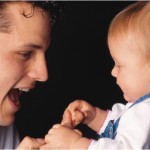While many child mental health professional stress the importance of obtaining information from multiple sources (child, mother, father, teachers, etc.), it is less clear what exactly one should DO with this information. This dilemma is highlighted in circumstances where the reports from different informants paint a very different picture of the same child.
In a recently accepted paper that will appear in an upcoming edition of the Journal of Child and Adolescent Psychopharmacology, we examined this issue in a community sample of Dutch children (Rettew et al., in press). One major finding from the study was just how common discrepant reports were between parents and teachers. Indeed, they were the rule rather than the exception. For example, among children rated by mothers as having clinical levels of aggression or rule-breaking behavior, teachers reported clear problems in only 22% and 12% of the time, respectively. Agreement for attention problems was somewhat better.
Disagreement was also found to be related to specific variables. Problems reported at home but not at school were found to be related to parental stress, child temperament, and gender.
When encountering such a clinical picture, the instinctual response is often to try and figure out who is “correct” and move on from there. Alternatively, there may be great utility to explore the range of possibilities for informant disagreement.
- The child may actually be different in different settings. Understanding why, for example, a child is disruptive at home but not at school can offer important clues as to environmental changes that could be incorporated more widely.
- An informant’s own difficulties might be influencing judgment. A parent who is depressed, for example, might have more trouble tolerating typical boisterous behavior, leading to needless conflicts that might be avoided if the parent is treated.
- The presence of intentional misreporting can affect treatment too. Simply discounting a parent who under-reports on his or her child to avoid medication treatment, for example, is unlikely to solve the problem downstream. It is often better to discuss the issue head on to avoid future problems.
For those interested in further information, there will be a Department of Psychiatry Grand Rounds on this topic on Friday November 11, at 10:30am in the Davis Auditorium at Fletcher Allen Health Care in Burlington.
Reference
Rettew D, et al. When Parents and Teachers Don’t Agree: The TRAILS Study. J of Child and Adolescent Psychopharmacology, in press.








